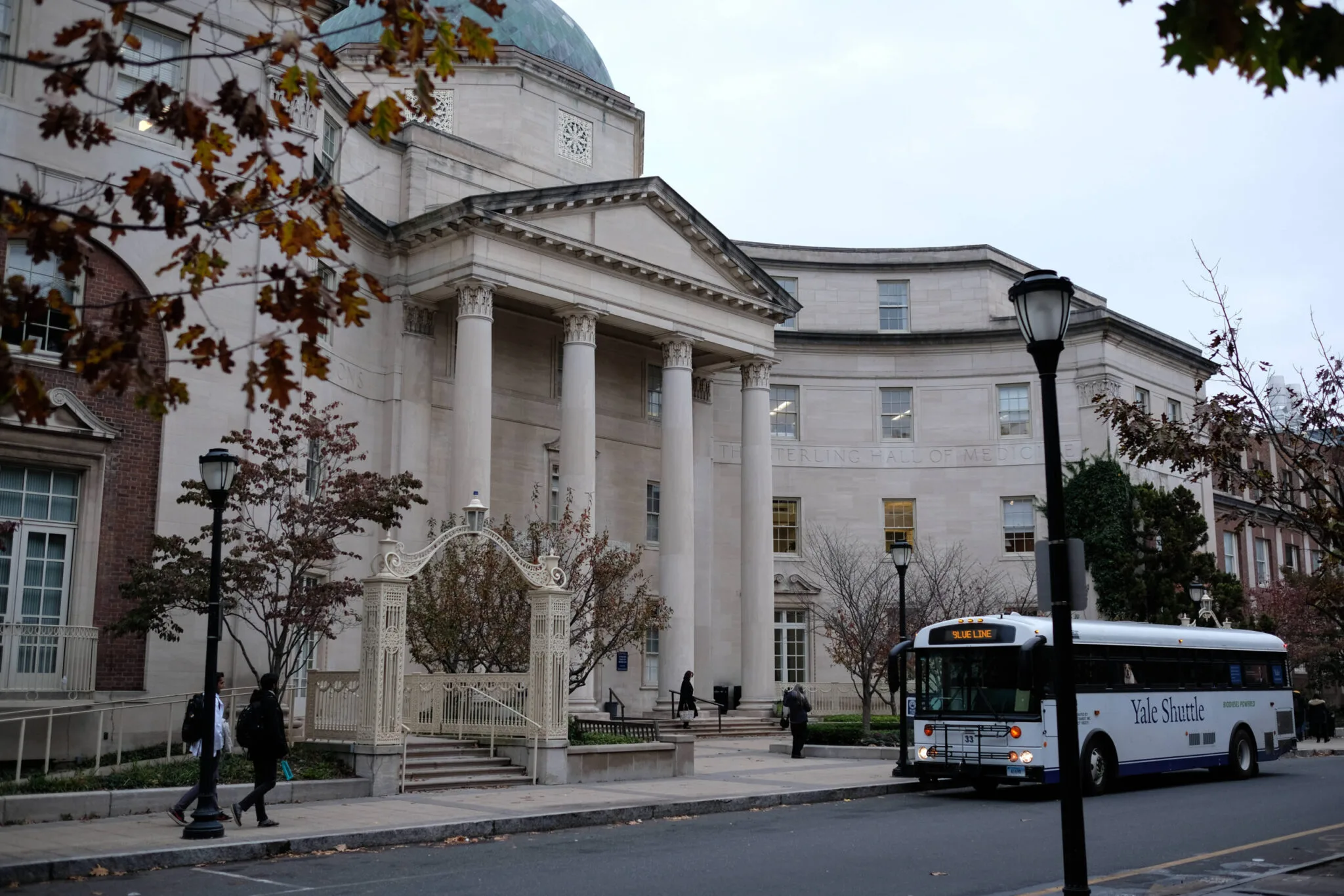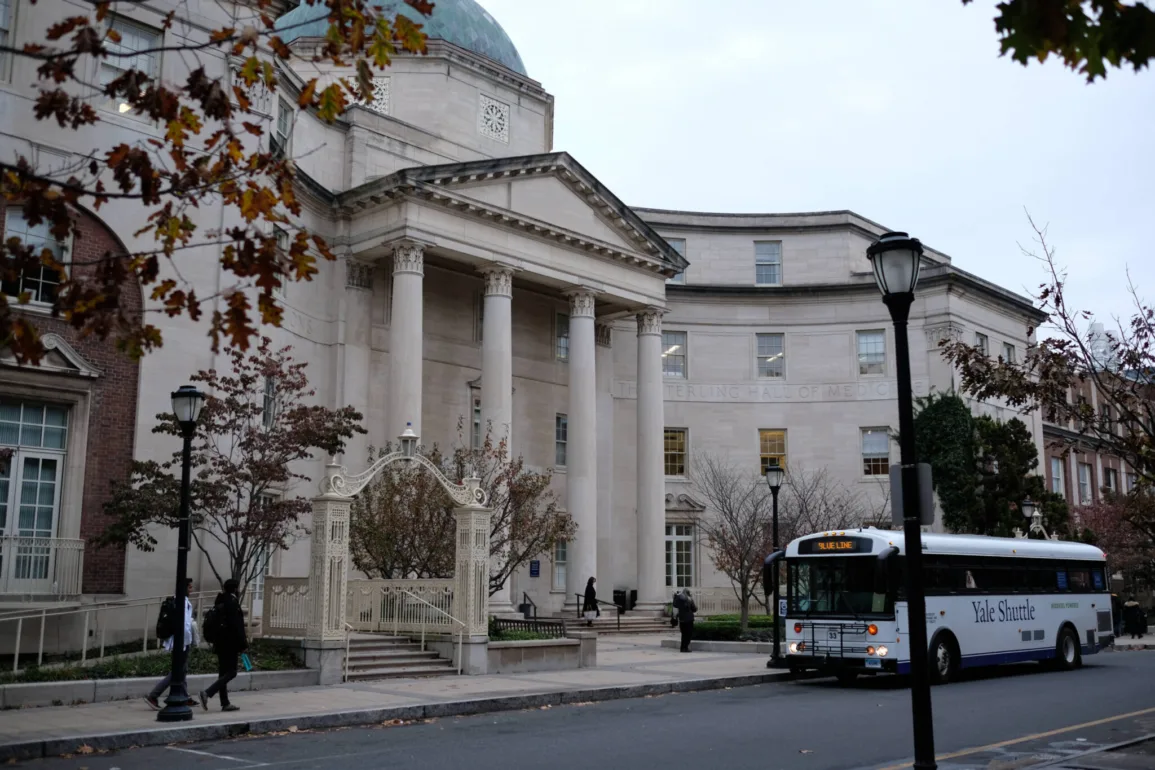A team at the Yale School of Public Health and Yale School of Medicine has uncovered that Black communities are especially vulnerable to harmful air pollutants, casting doubt on clean air policy.
Richard George

Eric Wang, Contributing Photographer
In a new study, Yale researchers have found persisting racial disparities in access to clean air, calling into question the effectiveness of decades of clean air policy.
Kai Chen, an epidemiology professor, and Yiqun Ma, a doctoral student at the Climate, Health, and Environment Nexus — or CHEN — lab, led a team of researchers at the Yale School of Public Health and Yale School of Medicine to investigate racial differences in exposure to fine particulate matter, also known as PM 2.5. In their study published in the journal Nature, Chen and his team found that Black people are exposed to fine particulate matter at higher rates than white people.
By analyzing cardiovascular mortality and particulate matter concentration across 3,103 U.S. counties from 2001 to 2016, the researchers discovered that in areas where white and Black communities inhale the same number of pollutants, Black people are three times more likely to die from cardiovascular disease.
For Chen, their analysis suggests that existing U.S. clean air policies have not addressed long-standing inequities between Black and white Americans in access to safe, breathable air.
“We have seen a dramatic decrease in pollution due to the Clean Air Act, but does that reduction in air pollution bring the same benefits to each racial-ethnic group?” Chen asked. “If we continue the same clean air policies, it won’t solve the relative racial disparity.”
A major pollutant in the earth’s atmosphere — “fine particulate matter” — includes particles of dust, soot and smoke that are 2.5 micrometers or smaller. When the particulate matter enters the bloodstream, it triggers systemic inflammation, disrupts cellular function and causes cardiovascular diseases, such as stroke. Chen believes PM 2.5 is the main driver of poor air quality globally, with its victims totalling seven million people per year.
Ma argued that U.S. environmental air policies have decreased the concentration of particulate matter in the atmosphere. Still, Black communities in the United States face the greatest burden in pollution and environmental damage.
Emma Zang, a sociology and biostatistics professor at the YSM, noted that decades of U.S. policy and redlining have targeted Black communities by isolating them to nearby highways and major pollution sites. At the same time, policymakers pushed white communities to live in cleaner communities.
“Environmental racism is most widely understood as the disproportionate exposure of communities of color to environmental hazards,” Ma said. “While other forms of racism may focus on issues such as discrimination in employment, education and housing, environmental racism primarily concerns the discriminatory policies and practices in environmental policy and planning.”
Chen and his team maintain that these downstream effects of “structural racism” are not genetic or behavioral, but rest squarely in racially discriminatory practices.
Harland Krumholz ’80, a professor of medicine, told the News that particulate matter exposure “is varied by the color of your skin” and economic standing.
“It is emblematic of the fact that where you are and your social context can put you in a position that your exposures drive health risks in a way that is unfair,” Krumholz said.
The racial divide in PM-attributed cardiovascular death is due to two factors: exposure and vulnerability. Exposure refers to the amount of particulate matter one inhales, but vulnerability describes the disproportionate impact of the same exposure on different populations.
In the same region, Black people experience more health effects from the same exposure to particulate matter than white people. Chen and his team believe that this is caused by preexisting conditions, community-level factors and social determinants of health, among other things.
“The distinction between exposure and vulnerability is very important,” Robert Dubrow, an epidemiology professor at YSPH, wrote to the News. “These two factors combine to multiply the adverse effects of PM 2.5 exposure. Thus, Black people with the exact same exposure to PM 2.5 as non-Hispanic White people endure greater cardiovascular mortality due to vulnerability factors such as a higher prevalence of pre-existing medical conditions, … poorer nutrition, less access to opportunities for physical activity, the mental stress of living in a racist society, and poorer access to healthcare.”
Still, in the face of these challenges, the researchers believe that there are potential solutions.
They identify two primary routes: government regulations, and targeted policies to address disparities in exposure and vulnerability for Black communities.
“We must eliminate racism fundamentally from society,” Zang said. “We have to address racism at the structural level, both micro and macro. If we adopt an intersectional approach, it could provide us useful insights to help us accurately find the most vulnerable populations that need help.”
Ultimately, the team encourages researchers to acknowledge that marginalized communities are not homogenous.
Zang emphasized that their recent insights on population health have only occurred through a collaboration of social scientists and epidemiologists that centers a social lens in inquiry.
“What we are trying to illuminate is the strong effects of social context and the targets to eliminate these disparities,” Krumholz said. “We are not making progress. Over 20 years, 80 million years of lives were lost by the Black community due to increased mortality risk. We are no better off than we were 20 years ago, and these things demand action.”
The CHEN lab is located at 60 College St.


